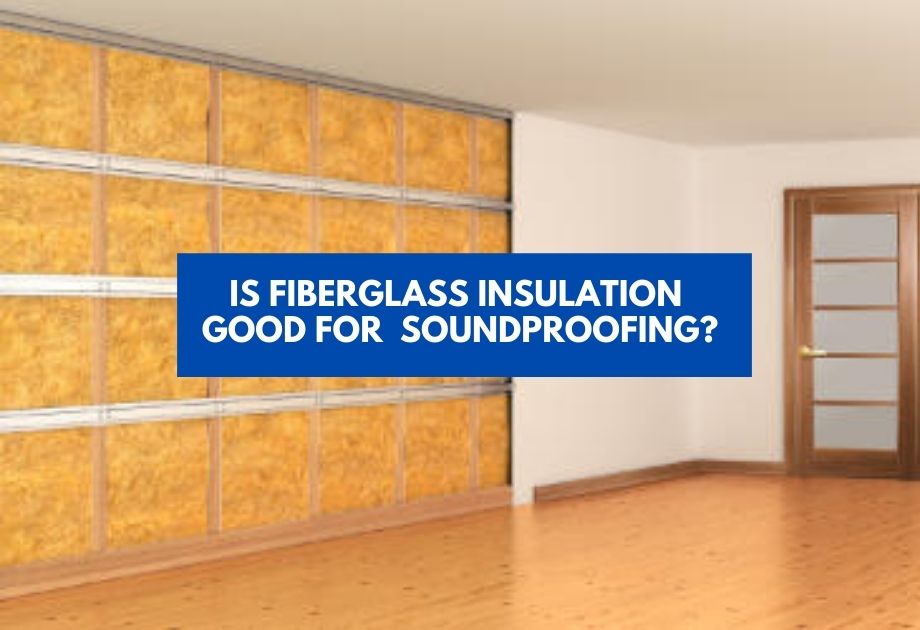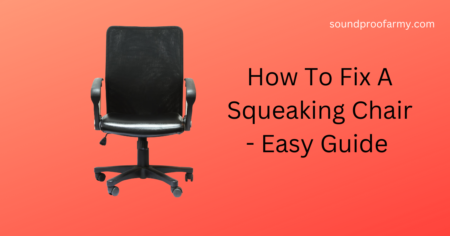The echo is a problem in many rooms, but echo may be reduced or eliminated cheaply.
If you want to save some money and soundproof your home, then you can do it yourself.
Soundproofing means that you need to soundproof every surface of the room- floors, walls, ceiling, and doors.
Echo happens when sound reflects off a surface, and at the same time, bounces back to your ears.
In this article, we will discuss 8 practical ways to reduce echo in a room cheaply.
Table of Contents
Reducing Echo in A Room Cheaply: A List of Practical Ways
Below are some ways to reduce echo in a room cheaply. You can use two or three of these methods to get the best results. Are you ready? Let’s get started
Fill the room with Furniture
One of the easiest ways to reduce echo in your room is to fill it with furniture. The furniture will absorb some sound and break up a lot of that sound that causes echo.
Echo is a phenomenon of audio feedback by repeating the sound from an emitter into an absorber.
Echo happens when a sound bounces back to the place it came from. If there is a lot of furniture in the room, the sound can’t bounce off and echo.
The best furniture to put in the living room is a couch. You can get one for each side of the room and put it against the wall.
A bookshelf such as the Sunon Collection 5-Shelf Wood Bookcase is another thing you could buy for your room. You can fill it with the books you have in your home.
Each person has their preferences for the kind of furniture they would like to fill their spaces with, so if this tip does not work well for some people, then don’t worry, there are other options below!
Acoustic Foam Panels
These panels are made of a lightweight open-cell foam that is sandwiched between two sheets of heavy-duty vinyl.
They can be installed on the walls or above the ceiling and effectively reduce echo in a room.
The acoustic foam panels can be bought in different sizes and thicknesses, so it is easy to find the perfect size.
They are often used by churches or other large rooms that require sound control.
You can easily install acoustic panels in your home, and they are a much cheaper option than acoustic tiles.
Use Curtains to Cover the Windows
There are several ways that people have found helpful to reduce the echo in their rooms.
One way is to put up curtains and cover the windows in the room.
This interrupts the room from having sound waves bounce off of all of the surfaces in the room.
It also helps by blocking out any outside noise, especially traffic noise.
This type of curtains is thicker than regular curtains. They can reduce noise in the room.
The curtains are beautiful. You can choose from many different colors and designs. With custom curtains, you can make the room look like what you want it to be.
Choose curtains like NICETOWN Bedroom Full Blackout Curtain Panels, Super Thick Insulated Grommet Drapes, Double-Layer, which can help block noise.
To install the curtain, you need to buy some rods and drills from the hardware store. You do not need to hire someone professional for this job.
Rugs for Your Floor
The rug you choose will make a big difference in how much echo your room has.
If possible, try to use an area rug made of wool or another material with natural noise-absorbing qualities.
This type of flooring can help absorb sound waves before they bounce back into the room and cause more problems for people trying to talk there.
If you don’t have enough space for a large area rug, then consider putting down some smaller rugs as accents throughout the room rather than having one long runner spanning from one end of the living room up against the wall on the opposite side.
Install Floor Underlays
Floor underlays can reduce echo in your room by making the sound waves bounce off the floor and walls instead of reverberating.
The types of flooring underlayment you choose will depend on what you are using your room for.
Rubber tiles are great for live playing music because they absorb vibrations from instruments and reduce echo.
This is not the best choice for a dining room because it can cause chairs to slide out from under people who sit in them.
The cost of installing floor underlays is very reasonable and cheaper than other options.
Typically, the more expensive your property is, the better quality the installation will be.
The install can also help take care of any squeaks from loose boards
The process of installing floor underlays is straightforward and can be done in a day.
You install the sheets on top of your existing flooring, whether it’s carpet or wood, but you must have to clean your floor before installing.
After installation, you have something similar to an echo chamber where people can talk at average volumes without having any echoes.
Sound waves are bouncing off of each other instead of reflecting into the room.
This will also help maintain good acoustics, which improves hearing for everyone!
Floor underlays will reduce echo, but they’re not just for music rooms – they work great in bathrooms too! If you live near water as some cities do (i.e., Seattle), you will notice that sound waves bounce off the water instead of reflecting.
This is because there are very few materials with a lower reflectivity than water, which can help make someone’s voice louder and clearer.
Get Fabric Instead of Metal Blinds
You can reduce echo in a room by using Fabric blinds instead of wood or aluminum. They will either absorb sound waves or break them up to bounce back to the surface.
There are many fabric blinds on the market. Some will have heavier fabric, and others lighter fabric with different textures or patterns that can add color to your room as well.
Soft fabric blinds can reduce echo in a room.
Faux fabric blinds can reduce the echo in your room too, but you will have to keep them clean and not let anything touch them that might leave dirt or oils behind.
Fabric is more durable than wood or metal, so it should last longer as well.
In addition, the fabric may be cheaper than other materials like aluminum for reducing echo in rooms.
Use Plants
This is a tip that may not work for everyone, but plants are a great way to reduce the amount of echo in your room.
The material used in houseplants does not have any unique properties that will make them capable of reducing echoes. Still, they do absorb sound waves and release carbon dioxide into the room.
Many different types of plants can be used to reduce echo, and you might have some at home already without even realizing it!
Some good plants for reducing echo are as follows: ferns, spider plants, peace lilies, golden pothos ivy vines, and bamboo.
These all have properties that make them ideal choices to reduce echoes in your home or office!
Install Mass Loaded Vinyl on the Walls
Mass-loaded vinyl is a mass-loaded product that can be applied to just about any surface.
The mass of the material will reduce echo and make it seem like the sound isn’t bouncing around in the room as much.
For example, if you put mass-loaded vinyl on your ceiling, walls, and floor, then when someone speaks louder than expected, they won’t cause echoes for people sitting next to them because their voice will feel dampened due to all the mass-weighted products in use.
There are many different brands of Mass-loaded Vinyl available, so do some research before picking one up at a hardware store or online at sites such as Amazon.
These materials are easy enough to install yourself but are sure not to cover vents with them, or else you’ll have trouble with airflow.
Mass-loaded vinyl will work best in rooms that are less than 2000 square feet and have a high ceiling.
Mass weighted curtains also make a good alternative if you don’t want to paint your walls or install mass loading all over them.
Conclusion
Above are some of the best tips on how to reduce echo in your room. These tips can be done using materials you have at home.

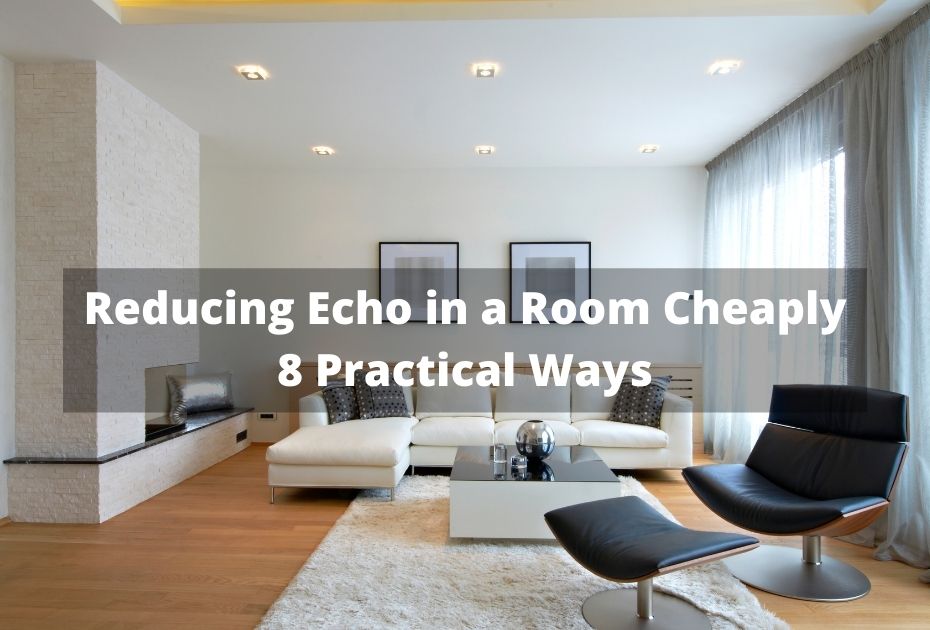



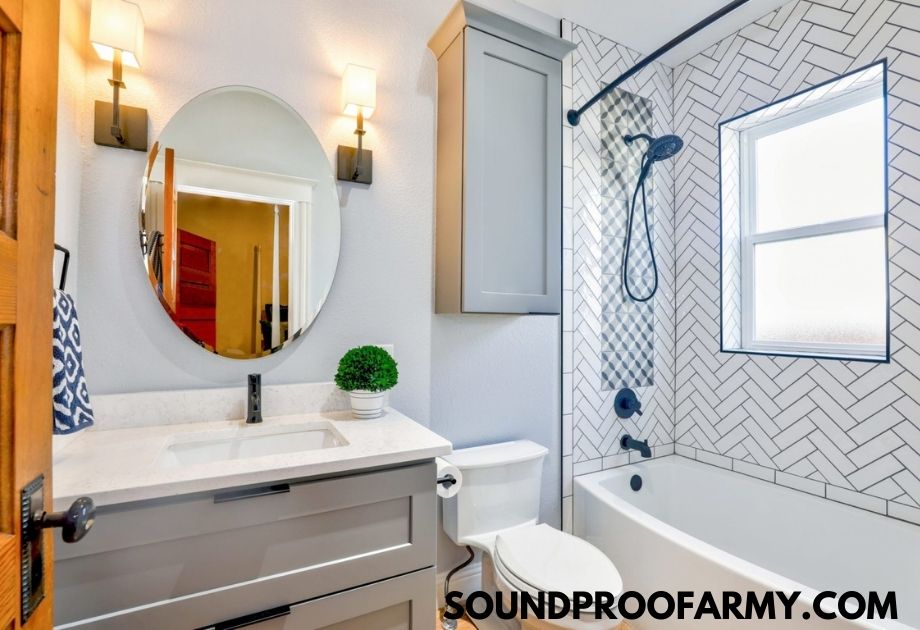
![How To Soundproof A Basement Ceiling Cheaply [9 Ways]](https://soundproofarmy.com/wp-content/uploads/2021/06/cheapest-ways-to-soundproof-basement-ceiling-Simple-DIY-Hacks.jpg)
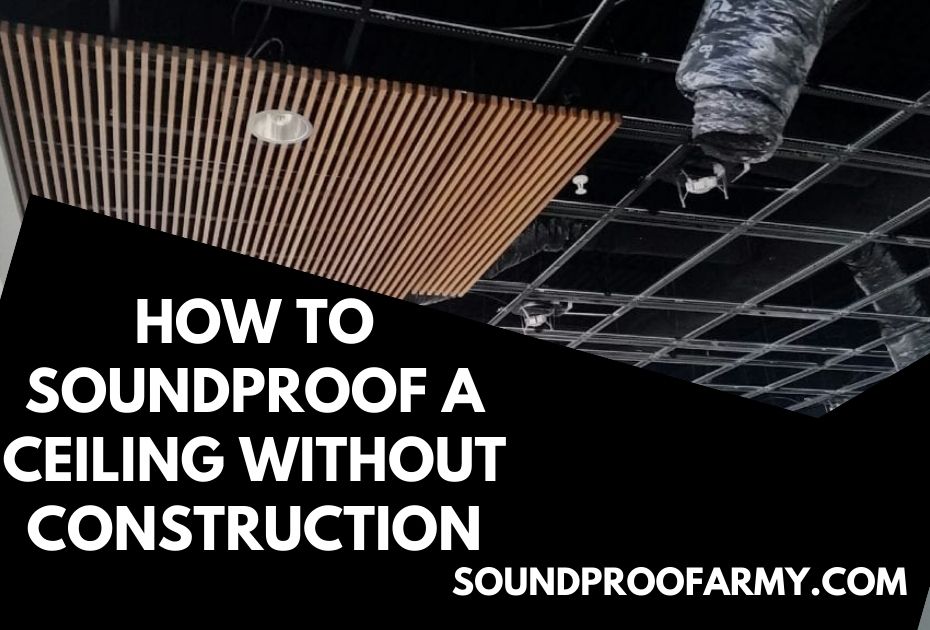
![How to Soundproof a Door with Household Items [14 Effective Ways]](https://soundproofarmy.com/wp-content/uploads/2021/07/How-to-Soundproof-a-Door-with-Household-Items.jpg)

